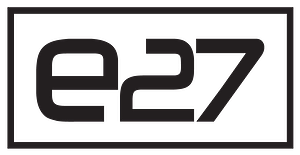The Dark Side of AI-Powered Employee Wellbeing Programs
AI-powered employee wellbeing programs promise personalized support and early burnout detection, but without strong governance they can slip into surveillance, bias, and cultural erosion that undermine trust and genuine care.
Enterprises are increasingly turning to AI-powered employee wellbeing programs, viewing them as a scalable and cost-effective solution to monitor, support, and enhance workforce health. These platforms promise personalized care, predictive analytics, and round-the-clock engagement. For leaders, the appeal lies in their ability to address employee needs at scale without exponentially growing HR headcount.
Yet, as adoption accelerates, so too does the potential for misuse and unintended consequences. Beneath the glossy promise of “AI for good” in workplace wellbeing lies a complex web of ethical, legal, and cultural risks. When wellbeing initiatives become entwined with continuous monitoring and algorithmic judgment, the balance between support and surveillance can shift dangerously.
The Promise and the Peril of AI in Wellbeing
The Promise
AI wellbeing platforms bring a range of benefits. They can deliver personalized mental health recommendations tailored to each employee’s needs, rather than generic wellness initiatives that often miss the mark. Virtual wellbeing assistants and AI chatbots offer 24/7 support, giving employees immediate access to guidance, stress management tools, and even crisis intervention. Predictive analytics can flag early signs of burnout, absenteeism risk, or disengagement, allowing managers to intervene before problems escalate.
The Peril
The same capabilities that make AI wellbeing tools attractive can also introduce harm. Continuous tracking can cross into invasive territory, creating an environment where employees feel constantly evaluated. Algorithmic bias can skew recommendations, disadvantaging certain employee groups. Most concerning, AI-driven wellbeing often replaces the nuance and empathy of human HR interactions with impersonal, data-driven interventions.
Hidden Surveillance in the Name of Wellness
Many AI-powered wellbeing systems rely on extensive data collection. This may include wearable device metrics such as heart rate or sleep patterns, keystroke logging to detect fatigue, and even sentiment analysis of emails or chat messages. While these insights can provide a more complete wellbeing picture, they also blur the line between care and surveillance.
If mishandled, this data can be repurposed for performance evaluations or disciplinary actions. The result is a loss of trust, as employees may feel their participation in wellbeing programs is less about support and more about oversight. In extreme cases, the fear of being flagged can lead employees to mask genuine struggles.
Algorithmic Bias and Mental Health Stigma
AI systems are only as fair as the data they are trained on. If historical data reflects existing workplace biases, these can be amplified. For example, introverted employees might be incorrectly categorized as disengaged because their communication patterns differ from the “ideal” model. Neurodivergent employees or those with non-traditional work schedules could receive irrelevant or even harmful recommendations.
Such misinterpretations can reinforce workplace stereotypes and deepen mental health stigma. When employees feel judged by an algorithm, they may become less willing to seek support.
AI-Generated Wellbeing Scores and the Quantification of Humanity
A growing number of AI wellbeing platforms produce wellbeing scores—numerical representations of a person’s mental or physical health. While these metrics can simplify tracking, they risk oversimplifying human complexity. Mental wellbeing does not always fit neatly into a number.
Gamifying wellbeing through leaderboards or performance incentives can also backfire, leading to unhealthy competition or performative wellness, where employees act “well” to protect their score. Some may even learn to manipulate the system to avoid scrutiny, undermining the program’s intent.
Data Security and Legal Implications
With personal health and behavioral data in play, compliance with privacy regulations such as GDPR, HIPAA, or local data protection laws is paramount. AI wellbeing programs introduce new liability risks, especially if they misdiagnose or fail to flag critical health conditions.
The voluntary nature of participation is another grey area. If employees feel pressured to join for fear of being perceived as resistant, consent becomes questionable. Enterprises must tread carefully to ensure programs remain truly optional.
The Cultural Fallout of AI-Led Wellbeing
AI-driven wellbeing can reshape workplace culture in subtle ways. When employees sense that every action is tracked, trust erodes. A tool intended to promote care may instead foster suspicion.
Replacing human HR interactions with AI scripts can make wellbeing feel transactional, reducing morale. Over time, wellbeing risks being reframed from a benefit that supports employees to a KPI that employees must meet, shifting the psychological contract between employer and workforce.
Building Ethical AI Wellbeing Programs
Transparency and Consent
Clear communication is non-negotiable. Employees must know exactly what is being tracked, how the data will be used, and who will have access. Transparency builds trust and helps avoid the perception of hidden agendas.
Human-in-the-Loop Approach
AI should supplement—not replace—human HR professionals. While AI can surface patterns and flag risks, human judgment is essential for context and empathy in wellbeing interventions.
Independent Auditing
Enterprises should implement regular, independent audits to assess bias, accuracy, and privacy safeguards. This ensures that the AI is delivering equitable, compliant, and truly supportive outcomes.
Conclusion
AI-powered employee wellbeing programs have the potential to enhance workplace care at an unprecedented scale. However, without thoughtful governance, ethical guardrails, and a strong human component, they risk becoming instruments of control rather than compassion. For business leaders, the challenge is to embrace innovation without compromising trust, privacy, or the humanity of the workplace.



